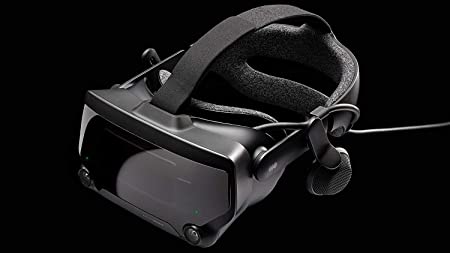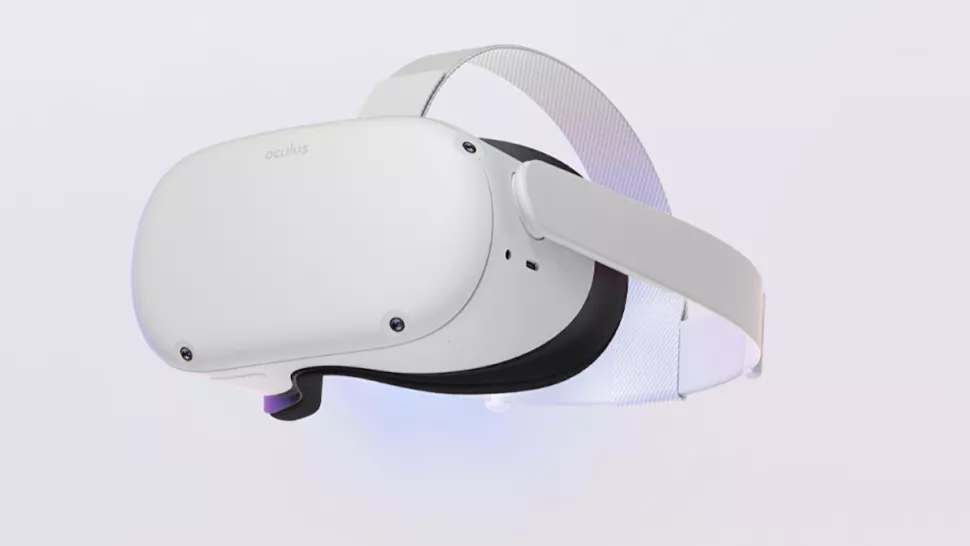Oculus Quest 2 vs Valve Index
When you compare the Valve Index to the Oculus Quest 2 you can see which VR Headset is better. Let's take a look of the comparison, and see which model of VR Headset out ontop.
What VR Headset is better?
In comparing two popular virtual reality (VR) headsets, the Valve Index and the Oculus Quest 2, it's clear that each has a distinct set of features and capabilities. While both headsets offer similar experiences for immersion into VR games and apps, there are some key differences to consider.
Starting with the Valve Index, this PC-based headset offers a field of view of 130 degrees, along with resolution of 1440x1600px. This is supported by an impressive refresh rate of 120 Hz and minimum graphics requirements for an Nvidia GeForce GTX 970 or AMD RX480 GPU. This higher end hardware makes this headset more suitable for those who require high performance from their VR gaming experience. On the downside however, this also comes with a heftier price tag as well as additional setup required when connecting to a Windows system.
The Oculus Quest 2 on the other hand provides users with both greater portability and affordability in comparison to its competitor. As a standalone device, it runs on its own CPU: Qualcomm Snapdragon XR2 processor rather than relying on external hardware. Its 97° field of view is slightly less than that of the Valve Index’s but still ample enough to provide good coverage when using its 1832 x 1920 px resolution screen display; although at 72 Hz refresh rate – which is lower than that offered by other devices - there may be slight lags in certain games or apps during use if compared directly with others like the Valve Index which can run at 120 Hz when connected to Windows systems properly configured for maximum results . In addition its Android 10 operating system offers numerous benefits over PC based platforms making it ideal for those seeking flexibility when accessing apps and games within their home environments quickly without any further setup or configuration needed once powered up after charging..
Personally I found myself preferring using the Valve index due largely to its higher refresh rates but at times I would find myself drawn towards using my Oculus Quest 2 due to its convenience as it could easily be moved around without needing additional cabling while offering many great features without sacrificing much overall performance from gaming standpoint when compared directly against other devices like my valve index . Ultimately , i feel these two headsets serve different purposes depending on what you require from your VR experience but both have impressive specs considering their respective prices ranging between $200-900 USD depending on models selected so take time consider what meets your needs before deciding which one works best for you .
Specs comparison between the two VR Headsets
| Valve Index | Oculus Quest 2 | |
|---|---|---|
| Overview | ||
| Brand | Valve | Meta |
| Model Name | Index | Quest 2 |
| Release Date | 2019 | 13102020 |
| Country of Origin | United States | United States |
| Category | PC VR | Standalone VR |
| Battery Life | 7 h | 3 h |
| Display | ||
| Field of View | 130° | 97° |
| Resolution | 1440 × 1600 px | 1832 x 1920 px |
| Refresh Rate | 120 Hz | 72 Hz |
| Display Type | LCD | LCD |
| Minimum Requirements | ||
| Min. Graphics Required | Nvidia GeForce GTX 970 / AMD RX480 | |
| Min. RAM Required | 8 GB | |
| Operating Systems | Microsoft Windows | |
| Sizing | ||
| Weight | 809 g | 503 g |
| Dimensions | 609.6 x 431.8 x 228.6 mm | 192 x 102 x 143 mm |
| Features | ||
| Room Scale? | YES | YES |
| 360 Tracking? | YES | YES |
| Positional Tracking? | YES | |
| Front Camera? | YES | |
| Eye Tracking? | No | |
| Usable with Glasses? | YES | YES |
| Cooling System | YES | |
| Built in Headphones? | YES | |
| Built in Microphone? | YES | |
| Flip Visor? | YES | |
| Voice Command? | No | |
| IPD Adjustment? | YES | YES |
| Lens to Eye Adjustment? | YES | |
| USB? | YES | YES |
| MicroUSB? | No | |
| Display Port? | No | |
| Mini Display Port? | No | |
| HDMI? | No | |
| MicroSD? | No | |
| Bluetooth? | YES | |
| Wifi? | No | |

